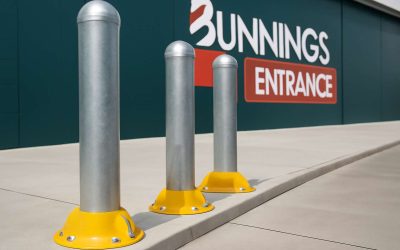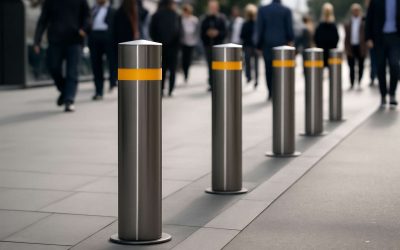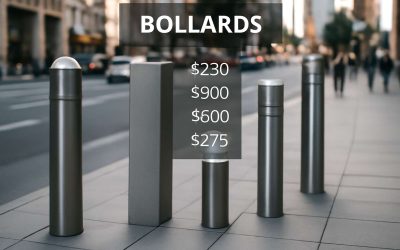
Bollards are frequently used to protect things like parking spots, electrical panels, the sides of buildings, loading docks, and front doors from vehicles that might try to ram them. They are also placed to block unauthorized vehicular access in high security areas where they prevent cars and trucks from getting too close to sensitive equipment, such as gas pumps or utility boxes. While there are many different types of bollards, all of them need to prioritize function over form, since their job is to stop an impacting vehicle. The materials that they are made from, however, can vary significantly.
The most effective bollards are those that are constructed of deeply embedded steel pipe filled and surrounded by cement, which engineer oversee to make sure they can withstand the force of an impacting car. These can either stand on their own or be capped with a decorative cover. While this type of bollard costs the most, it offers the highest level of impact protection.
There are less expensive bollards that are made of concrete, which can be formed into attractive designs to suit architectural styles. They are often painted with bright colors to be highly visible to drivers. While they don’t offer the same level of impact resistance as a high-performance bollard, they are still capable of stopping a moving car.
A third type of bollard is made of a metal, such as cast iron or ductile iron. The latter is particularly good at resisting impact, as it is not as likely to fracture upon collision. It is also malleable, allowing for the creation of intricate decorative ornamentation. It is durable in harsh weather, such as coastal regions that are exposed to salt spray, and it can be coated with a protective layer of powder paint to resist corrosion.
While a poured-in-place bollard is relatively inexpensive to install, it can be extremely difficult to replace. A damaged one might not be able to defend whatever it is protecting from another impact, and the surrounding area may need to be dug up to remove it. A better option is to use a removable bollard, which can be lifted out of place to allow for vehicular traffic.
A fourth type of bollard is made of rebar or other material that can be bent into attractive shapes and covered with plastic to make it appear decorative. Unlike other types of bollards, these can be easily lowered to allow for vehicle access and then pushed back into place when the event is over. They are more flexible than a concrete bollard and cost less to install, but they aren’t as strong or aesthetically pleasing. Many of these bollards are designed with sustainability in mind, and manufacturers offer options to recycle them when they reach the end of their useful lives. This makes them an environmentally-conscious choice for a wide range of site applications. They can also be equipped with lights to add a visual element and improve visibility for the safety of pedestrians.



0 Comments